Hello and Welcome to another Dropout Classicist newsletter! I really enjoyed discussing Greek Olympic snacks a few weeks ago, and have been baking a lot recently. Therefore I decided to try making a Roman snack too!
As the leaves turn brown and the nights draw in, an annual event takes place, a mainstay in my calendar: baking season. All the ingredients of the harvest are fresh in the shops, tv channels are airing the newest season of the Great British Bake-Off (The Great British Baking Show to Americans) and my kitchen is inevitably filled with the intoxicating aroma of cinnamon, and, more often than not, experiments gone awry. I am not good at baking, but I like to try different things. So, I thought I would join my love of the ancient world with my current baking obsession, and try a Roman recipe.
When it comes to the history of food, the Romans have always captured our imagination. Whether it be carbonised bread or fresco dishes in Pompeii, or the elaborate, over-indulgent banquets of the emperors, there is much to explore. Given the horrendous tales we hear of the dining of the rich, from stuffed door-mice to fermented fish, I decided to look for something a bit less absurd. Also, the limits of my willingness to learn about the past do not extend to torturing mice or making my entire house smell like rotting fish, so those were immediately off the menu.
Thankfully for my nose, there are plenty of other options to eat like a Roman. The opulent meals , with exotic dishes and couch-based reclining, do little to represent the day-to-day eating of the average citizen. In fact, most historians believe they were likely to be all show, a formal display of wealth and power, as opposed to a daily routine. How did the average Roman eat then? Well, thankfully we have lots of evidence, both written and physical.
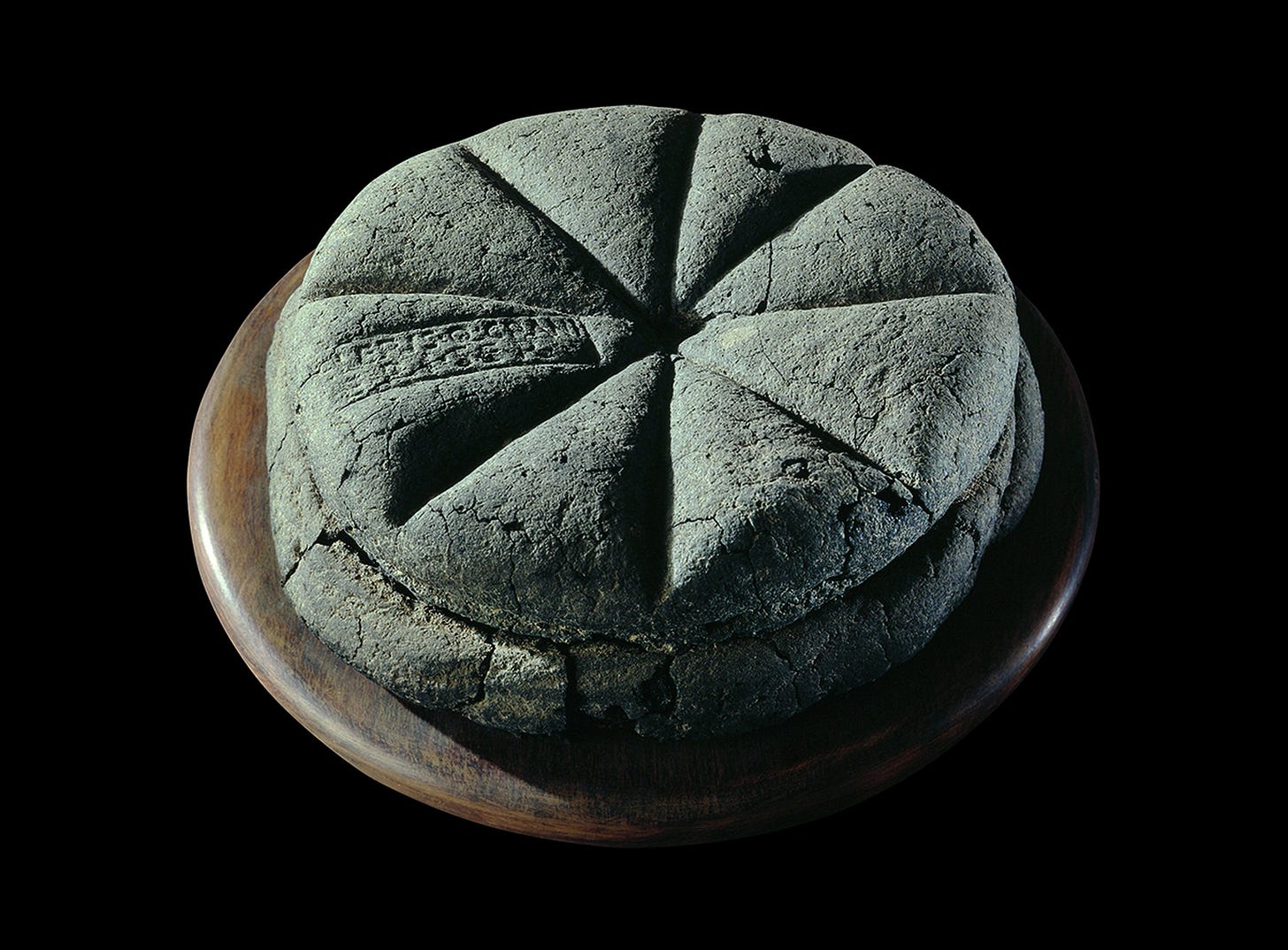
Physical evidence regarding food in the ancient world is often difficult to come by. Food, being an organic substance, does not survive the passage of time well. While it is possible to discern diets through material remains, like animal bones and charred grain often found in Roman sites, the most vivid picture of daily eating we could possibly gain comes from Pompeii. The city, famously coated in a pyroclastic surge from Mt Vesuvius in 79 CE, held a treasure-trove of evidence on daily eating. This can be from buildings, like the bakeries and thermopolia (the ancient equivalent of a snack bar/takeaway) that dot almost every corner of the town, to the rare examples of carbonised fruits and bread, we know that very few city-dwelling Romans actually cooked anything, and mostly ate out. However, in the way of actually recreating Roman food, my search here came to a dead end. Aside from the plain loves of bread, the recipe for which I doubt has changed much in the past 2000 years, there was little I could recreate. I wanted something more interesting.
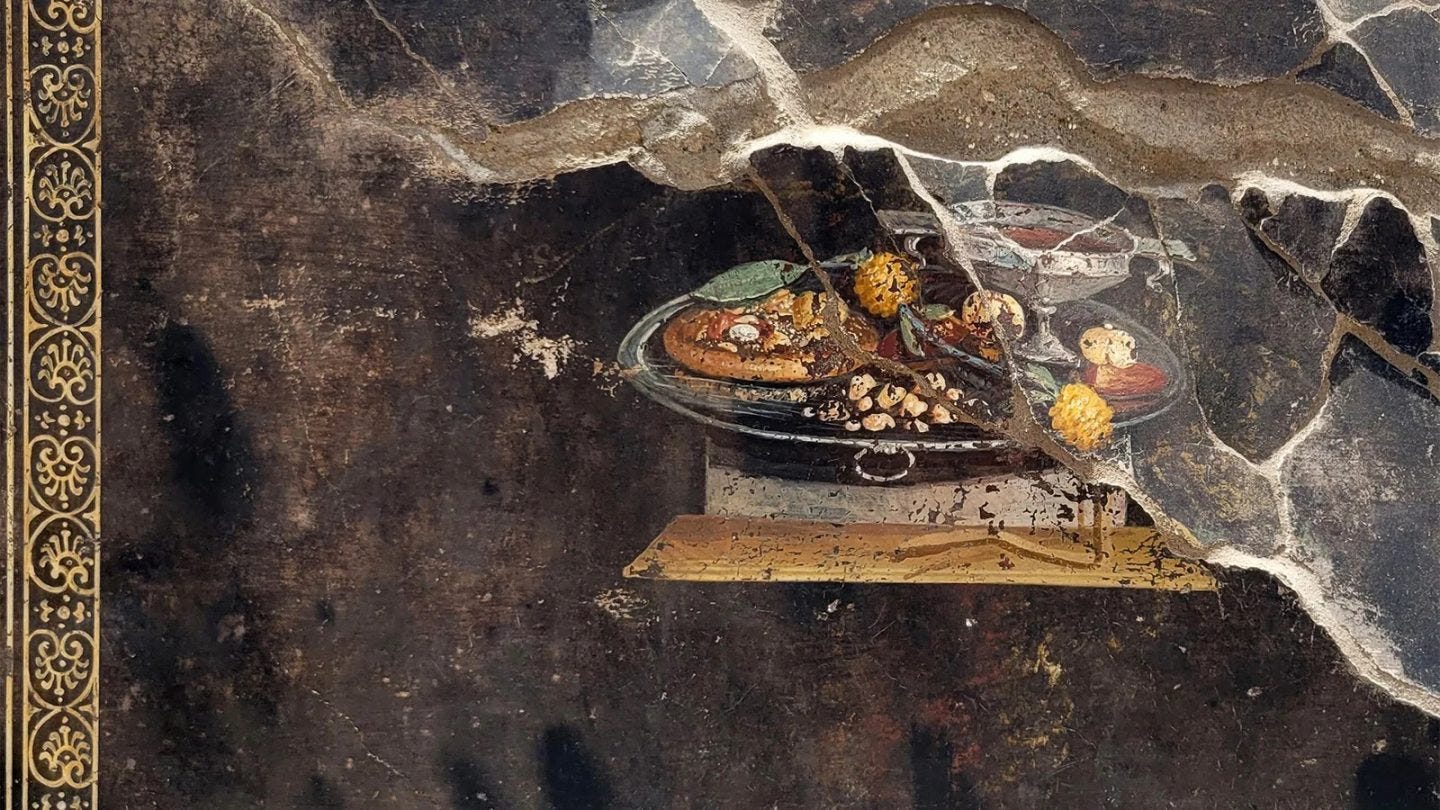
Thankfully for historians, and people with an absurd delusion of trying Roman food (like myself), the perfect piece of Latin literature survives. The treatise De Agri Cultura (On Agriculture), written by the statesman and farmer Cato the elder, is a treasure-trove of Roman recipes. Yes, thats right, actual Roman recipes! While most of the text is essentially a 2180 year old farming manual (interesting in its own right I suppose), Cato devotes an entire chapter to simple recipes for his farmer-wannabes. The text in itself is also incredibly interesting. It is one of the oldest fully surviving latin texts, to my knowledge the oldest in prose. Furthermore, while widely criticised as not being a particularly well written or interesting read, at least to contemporaries, it does a brilliant job conveying the morals of its writer and Rome at the time. Cato devotes a lot of the text to defending farming, which in its simplicity and tough lifestyle embodies everything moralists of the Roman Republic desired. Besides the recipe I shall examine, there are many more, including for Greek style wine, globi (as explored in my post on 'Honey Tokens') and instructions on traditional rituals for farmers. However, this does not mean his baking skills are any better than my own, it seems.
I decided, with Cato’s limited selection, to select his recipe to make libum. Libum were a kind of cheese-bread, widely regarded by scholars as having ritualistic importance. They could be left at shrines for less important sacrifices, though it would depend on the tastes of the deity in question. Also, they are simple and sounded tasty, being made only from flour, egg, cheese, bay leaves and honey. Well, so I thought. Though widely attested that they were served with honey, I believe this to be a mistake. The recipe Cato gives for libum does not involve honey, but the following two recipes for placenta and spira, another two breads, do use honey. However, the recipe for libum is much simpler, so I decided to go with that instead. Now, having a recipe, I am faced with only two small problems: my poor latin skills (I have always been more interested in Greek) and the recipe itself. Below is the entire recipe:
Libum hoc modo facito. Casei P. II bene disterat in mortario. Ubi bene distriverit, farinae siligineae libram aut, si voles tenerius esse, selibram similaginis eodem indito permiscetoque cum caseo bene. Ovum unum addito et una permisceto bene. Inde panem facito, folia subdito, in foco caldo sub testu coquito leniter.
Recipe for libum: Bray 2 pounds of cheese thoroughly in a mortar; when it is thoroughly macerated, add 1 pound of wheat flour, or, if you wish the cake to be more dainty, ½ pound of fine flour, and mix thoroughly with the cheese. Add 1 egg, and work the whole well. Pat out a loaf, place on leaves, and bake slowly on a warm hearth under a crock.
That is it. 49 words, (69 in English) most of which are not very specific. Even worse, Cato doesn’t specify a lot of things that would be quite useful. For example, he does not specify a cheese. Thankfully, I read a book recently about cheese (I know, I lead a very interesting life), so I did not the mistake of just using the cheese in my fridge. Most Romans did not have the same aged, hard cheese that we would use in most of our bakes or sandwiches nowadays. Chances are, he would be using some kind of softer cheese, possibly sheep’s cheese or goat’s cheese. I decided my best bet would be ricotta, given scholars often agree that would be our closest modern equivalent in terms of flavour and consistency. The next issue is what Cato means by ‘leaves’. Honestly, this stumped me. The latin word of choice, folia, is an equally vague term that refers simply to any sort of leaf. I doubt Cato would just be picking leaves up off the ground, so I decided bay leaves would be my best bet, given that he mentions using them in other recipes, and many other references to libum link them to bay leaves, due to said plant being sacred to Apollo.
There is one further cruciality to note, and that is the Romand pound. This measurement of weight is neither imperial nor metric, and works out at about 11.6 oz or 330g. So, that would be 660g of cheese. I do enjoy cheese, but I did not want to look like a maniac when I walked back from the supermarket, so I decided to half the recipe.
Having made bread before, the recipe itself was relatively simple. The dough does end up really sticky, no matter how much you work it, but for the sake of sticking to the recipe I persisted. Given that I had halved the recipe, I had 1/2 an egg left over, so used the leftovers as a glaze on top of the dough in order to make them look more appealing, and splitting the dough into 4 small loaves in order to help them cook quicker. Besides that, I kept to the original recipe as much as possible. I did encounter another difficulty, which was the temperature and time for which to cook them. Cato has no way of specifying a temperature, but does not even provide me with a state in which to remove them. Therefore, I decided 180 celsius for 30 minutes would suffice.
The libum were disappointing to say the least. I had managed to underbake them, which was the biggest problem. They were nicely done around the edges, but still doughy and a little underbaked in the centre. The flavour was quite bland, though not terrible. I had one completely as is, after they had done cooling, but decided to coat the rest in a mixture of honey, rosemary and salt (2-1-1), all of which would have been available to the Romans. This saved them, and turned them into a delightful treat. If you end up making them for yourself, I would absolutely recommend this. Also, crucially, remove the bay leaf before eating. I almost choked on it.
After the slight disappointment of the first batch, I decided to make a second, much more experimental batch. For this, as per my own tastes, I replaced the ricotta with a blend of mature cheddar and parmesan, then to compensate the missing moisture I added in a splash of milk. The dough for this experiment was noticeably less wet, and much more pleasant to work with and shape. These came out of the oven perfectly done, unlike their ricotta counterparts. I added the same honey mixture on to them, though they were delicious without.
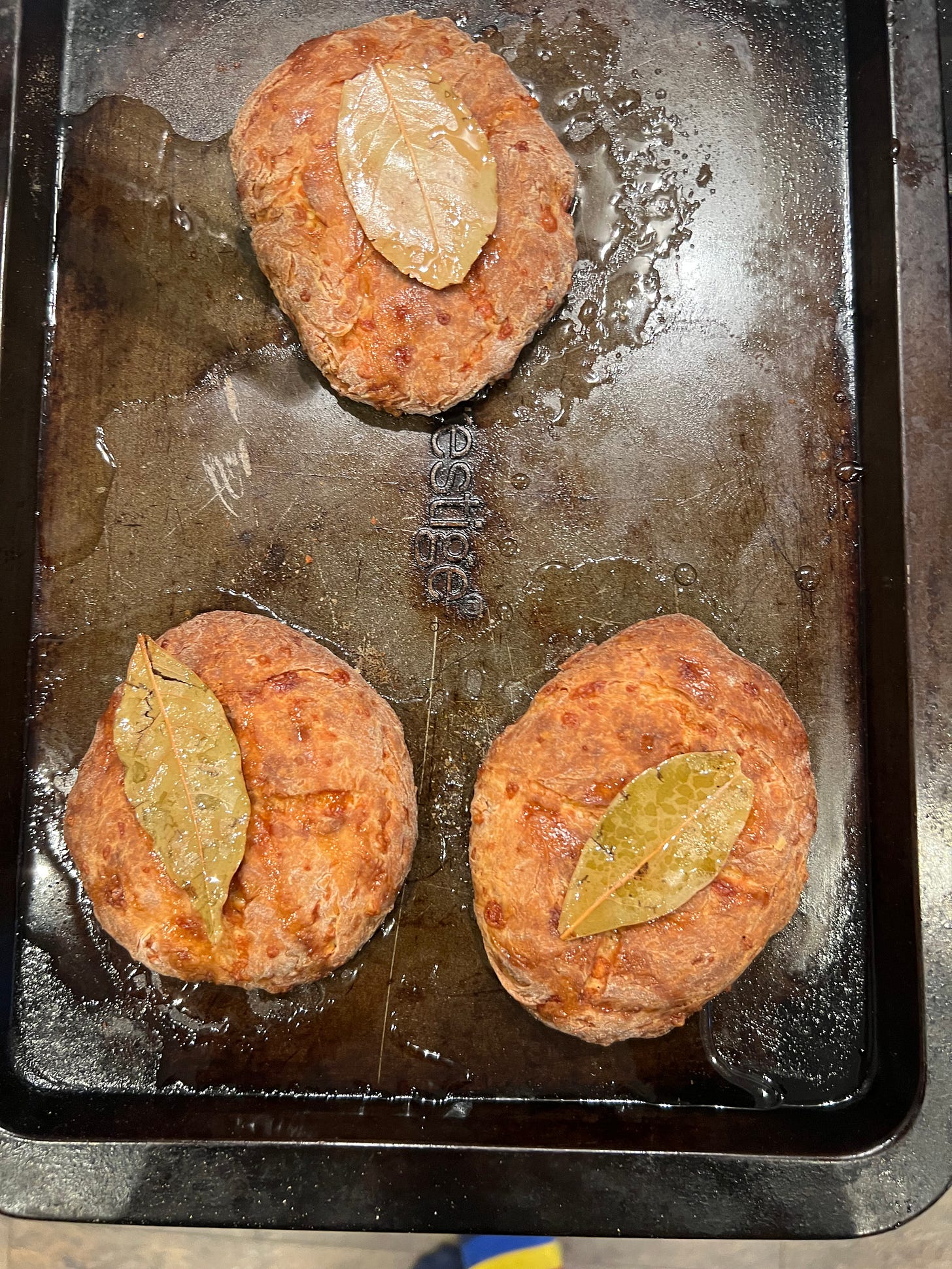
Cato’s recipes were a brilliant learning experience for me, and baking the bread was a fun time. I am, however, left with some questions. Cato was a pretty rich Roman, rising through the ranks of politics. To be frank, I didn’t read much on his political career for this article, but it is pretty obvious he was wealthy. This leads me to wonder, did he actually use the recipes he provides? After all, most wealthy Romans would have slaves running their kitchens. Cato’s contemporaries and farm neighbours state he liked to do a lot of the tough work in the fields himself, so he likely wouldn’t have had time to be baking bread every day too. While I am yet to try his other recipes, many of which contain more detail and complicated steps, perhaps the recipe wasn’t great because Cato himself wasn’t a particularly good cook. Then again, nor am I, and it is delightful that I can eat the same food as the Romans, almost 2200 years later.
Sources
Cato the Elder - De Agri Cultura
Cato the Elder - Loeb Classical Library
Pompeii - Mary Beard
Pompeii: The New Dig - BBC

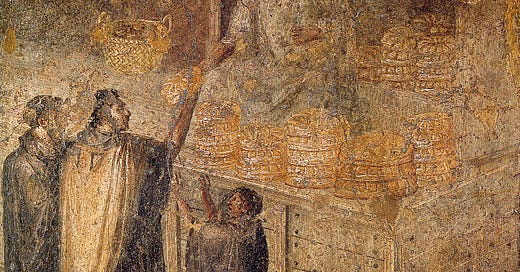



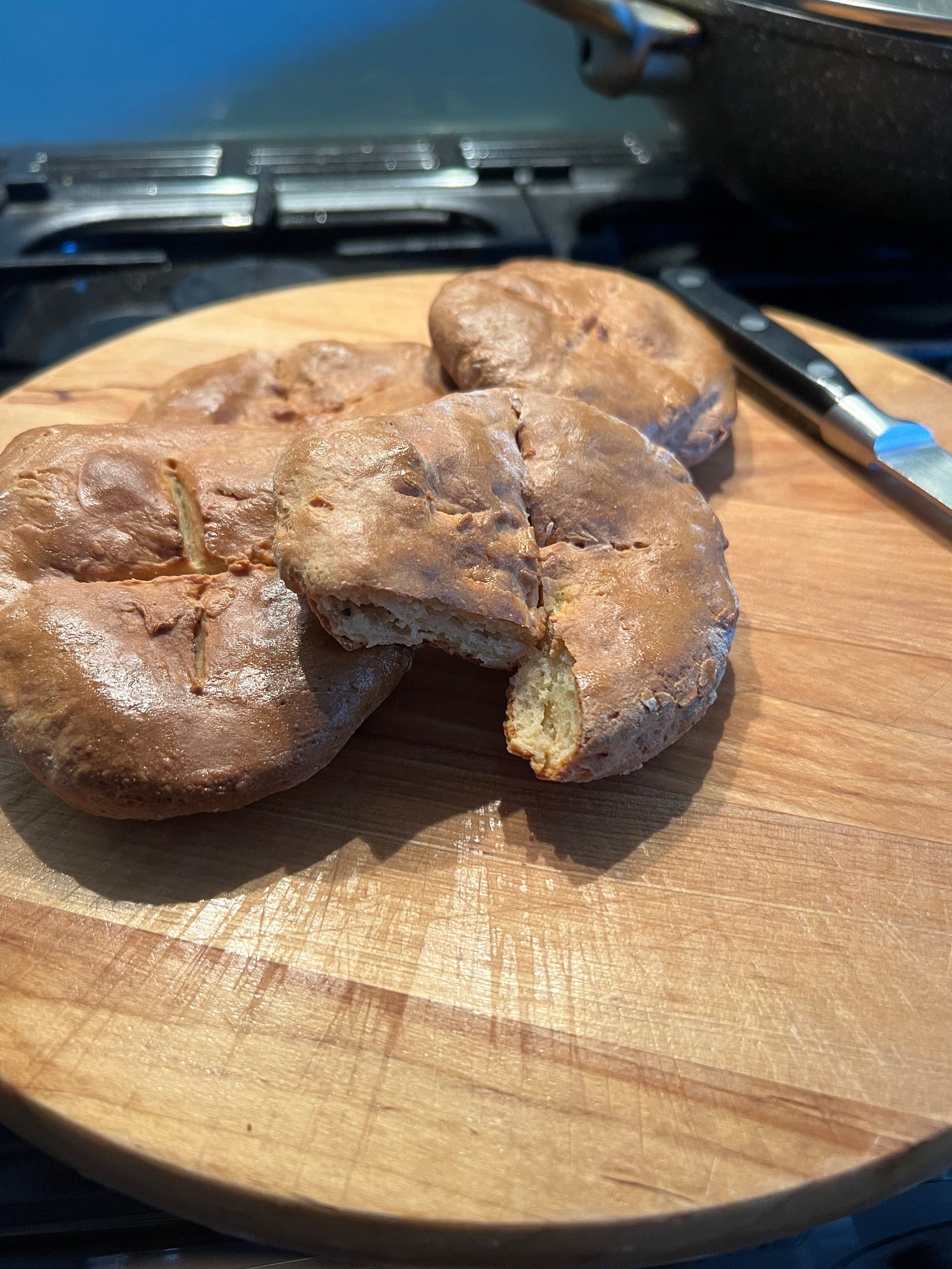
When I read the recipe only required one egg, my stomach dropped. I was imagining a super dense dough (I was also imagining modern cheese; your explanation of the softer, fresher cheeses made much more sense). Old recipes are always really interesting and offer a unique side to a culture; I enjoyed reading your experimentations. Do you know if they were used often for everyday breads as well as offerings or if one purpose dominated the other?
What fun! Years ago, when I was taking Latin in school, I was gifted a cookbook by Jon and Julia Solomon titled Ancient Roman Feasts and Recipes Adapted for Modern Cooking. It includes a libum recipe that I've successfully used for years. Their interpretation of Cato's recipe uses 1 cup of feta cheese, 1/2 cup of flour, and 1 egg to make two small loaves. Like your version, it's baked on bay leaves and glazed with honey afterwards. A most excellent offering!